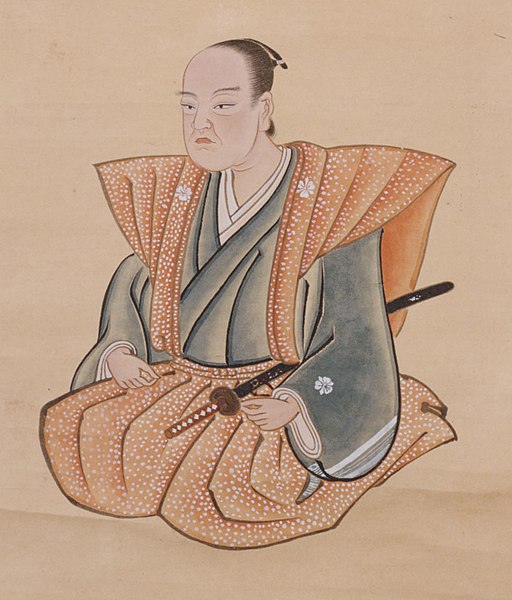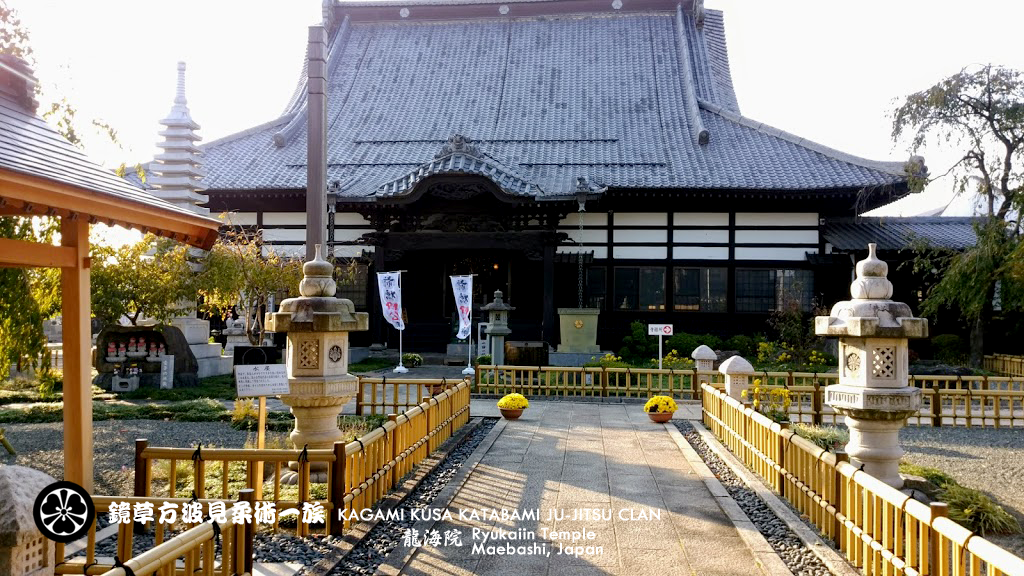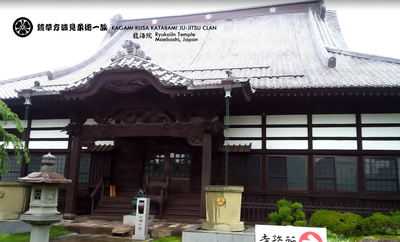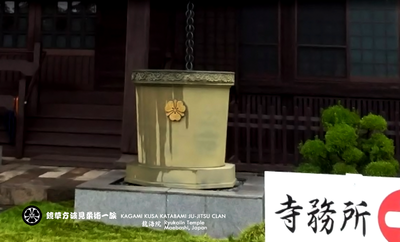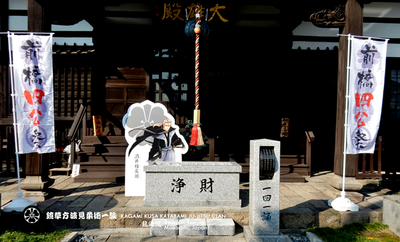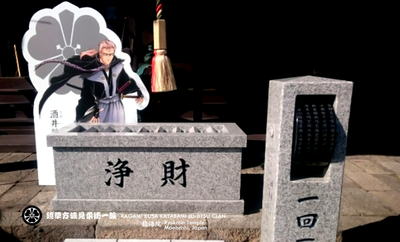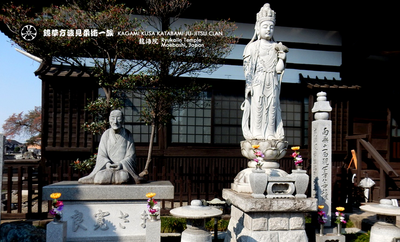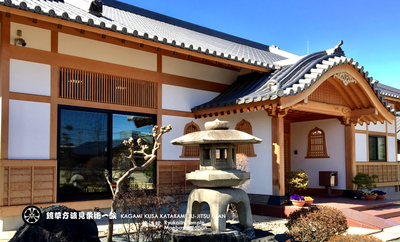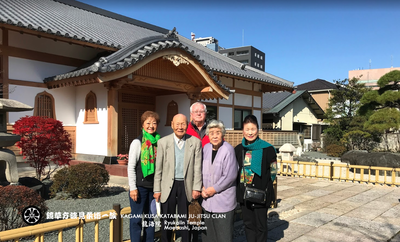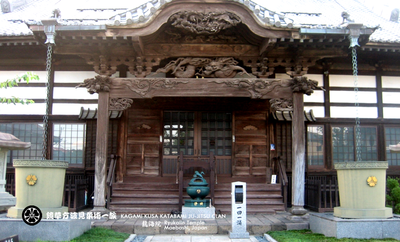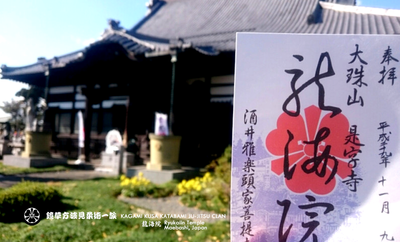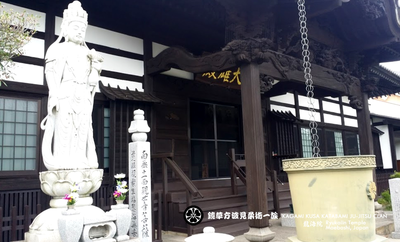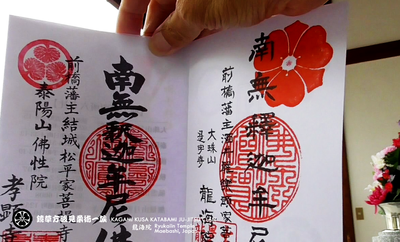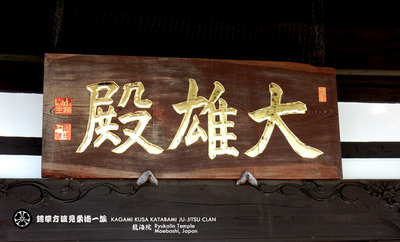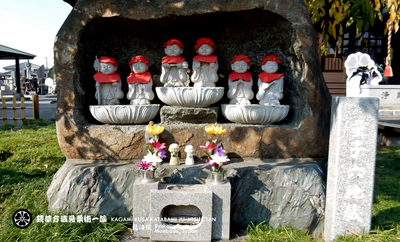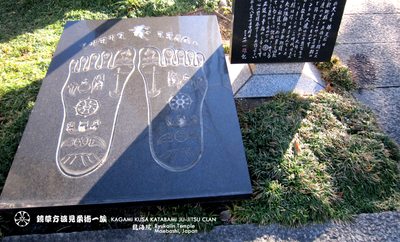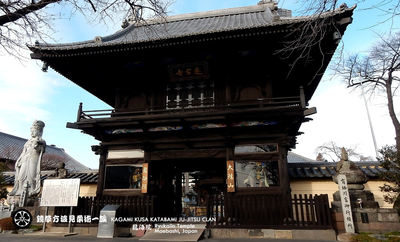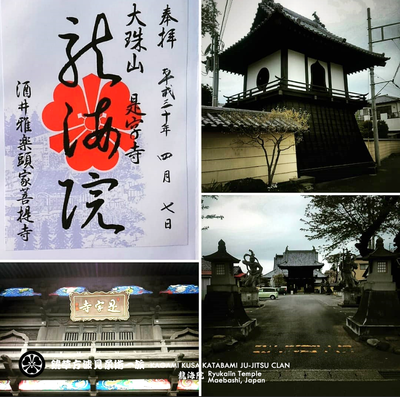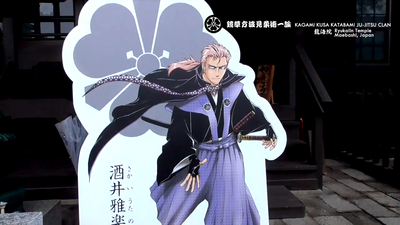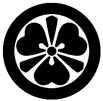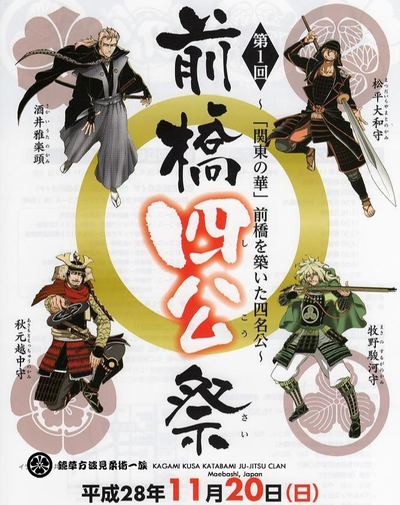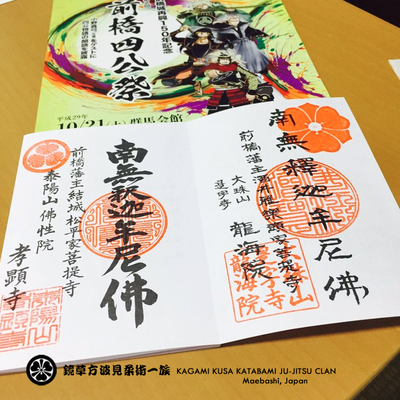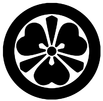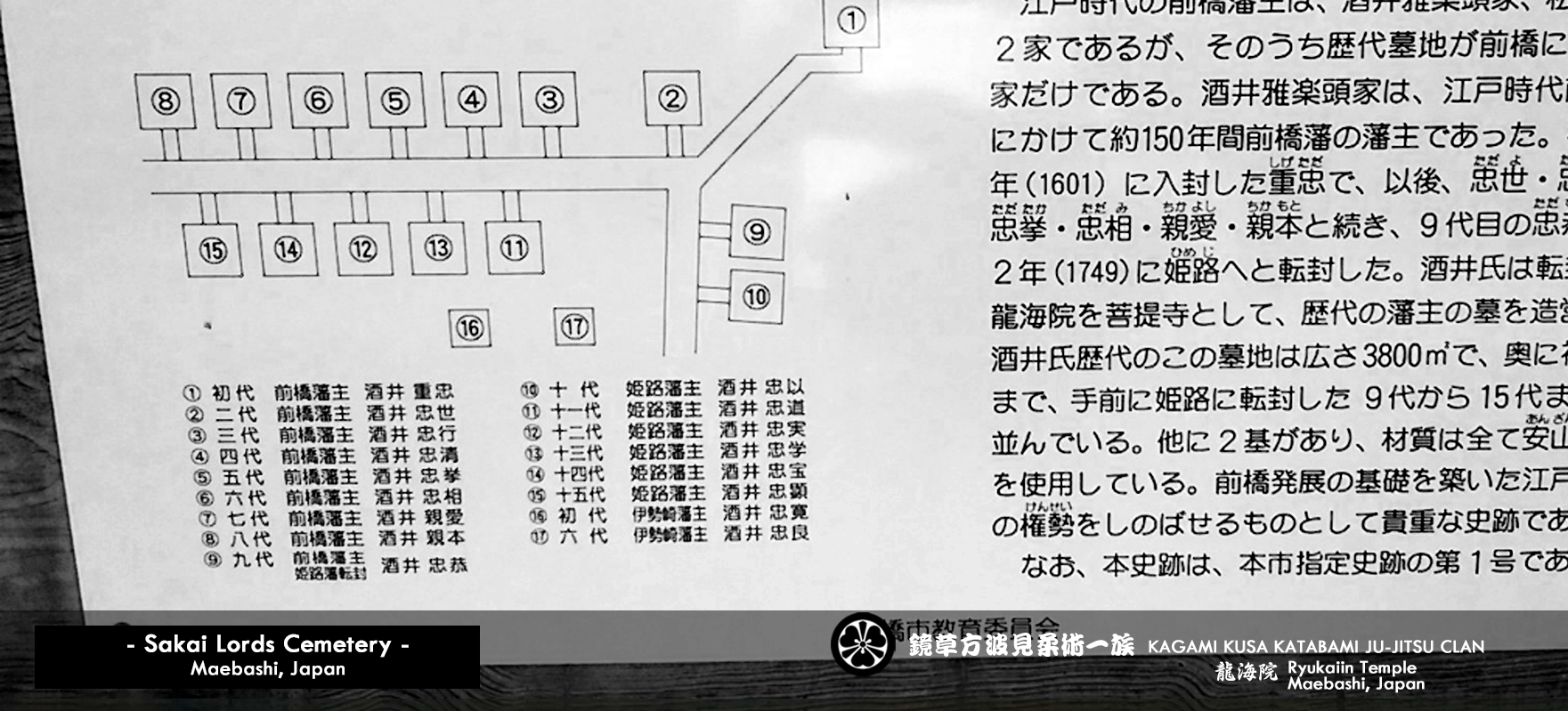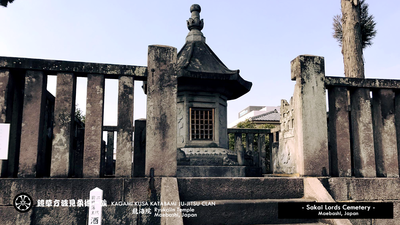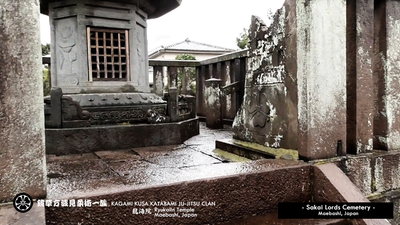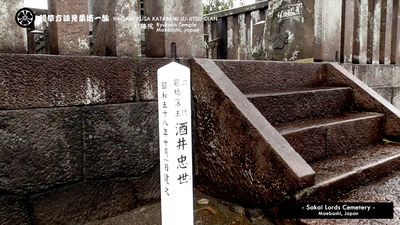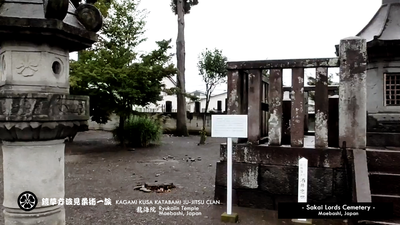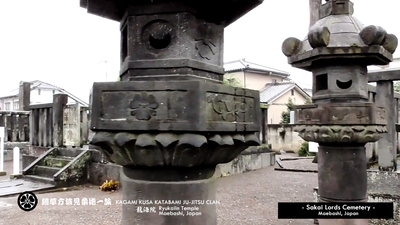Maebashi Domain |
前橋藩 |
Maebashi was the location of an important fortification in the Sengoku period on a strategic junction of the Tone River with the main highway from Edo to Echigo Province and the Sea of Japan with the Nakasendo highway connecting Edo with Kyoto. The area was hotly contested between the Uesugi clan and the Takeda and Odawara Hojo clans.
After Tokugawa Ieyasu took control over the Kanto region in 1590, he assigned the area to his trusted general, Hiraiwa Chikayoshi,
with revenues of 33,000 koku. Following the establishment of the Tokugawa shogunate, the Hiraiwa were transferred to Kofu Castle
and were replaced by a branch of the Sakai clan, formerly daimyo of Kawagoe Domain.
The Sakai ruled over nine generations from 1601 to 1749, during which time the domain was gradually enlarged to 150,000 koku. The 2nd daimyo, Sakai Tadayo and 4th daimyo, Sakai Tadakiyo served as tairo within the shogunal administration.
After Tokugawa Ieyasu took control over the Kanto region in 1590, he assigned the area to his trusted general, Hiraiwa Chikayoshi,
with revenues of 33,000 koku. Following the establishment of the Tokugawa shogunate, the Hiraiwa were transferred to Kofu Castle
and were replaced by a branch of the Sakai clan, formerly daimyo of Kawagoe Domain.
The Sakai ruled over nine generations from 1601 to 1749, during which time the domain was gradually enlarged to 150,000 koku. The 2nd daimyo, Sakai Tadayo and 4th daimyo, Sakai Tadakiyo served as tairo within the shogunal administration.
sakai clan

List of daimyo of the Maebashi:
Sakai clan (Fudai) 1601-1749
|
Name:
1. Sakai Shigetada (酒井重忠) 2. Sakai Tadayo (酒井忠世) 3. Sakai Tadayuki (酒井忠行) 4. Sakai Tadakiyo (酒井忠清) 5. Sakai Tadataka (酒井忠挙) 6. Sakai Tadami (酒井忠相) 7. Sakai Chikayoshi (酒井親愛) 8. Sakai Chikamoto (酒井親本) 9. Sakai Tadazumi (酒井忠恭) |
Tenure:
1601–1617 1617–1636 1636–1636 1636–1681 1681–1707 1707–1708 1708–1720 1720–1731 1731–1749 |
Courtesy title:
Kawachi-no-kami (河内守) Uta-no-kami (雅楽頭); Jijū (侍従) Awa-no kami (阿波守) Uta-no-kami (雅楽頭); Sakone-no-shōshō (左近衛少将) Uta-no-kami (雅楽頭) Uta-no-kami (雅楽頭) Uta-no-kami (雅楽頭) Uta-no-kami (雅楽頭); Jijū(侍従) Uta-no-kami(雅楽頭); Sakone-no-shōshō (左近衛少将) |
Sakai Tadayo
*** The daimyo (大名) were powerful Japanese feudal lords , until their decline in the early Meiji period, ruled most of Japan from their vast, hereditary land holdings. In the term, dai (大) means "large", and myo stands for myoden (名田), meaning private land.
*** The Roju (老中), usually translated as Elder, was one of the highest-ranking government posts under the Tokugawa shogunate
of Edo period Japan.
*** The Tairo (大老, "great elder") was a high-ranking official position in the Tokugawa shogunate government of Japan, roughly comparable to the office of prime minister. The tairo presided over the governing roju council in the event of an emergency. A tairo was nominated from among the fudai daimyos, who worked closely with the Tokugawa traditionally. Generally, the office holder was the shogunate's chief policy maker, and provided Japan with a capable temporary leader in the absence of a shogun, or in the event that the shogun was incapacitated.
*** The Roju (老中), usually translated as Elder, was one of the highest-ranking government posts under the Tokugawa shogunate
of Edo period Japan.
*** The Tairo (大老, "great elder") was a high-ranking official position in the Tokugawa shogunate government of Japan, roughly comparable to the office of prime minister. The tairo presided over the governing roju council in the event of an emergency. A tairo was nominated from among the fudai daimyos, who worked closely with the Tokugawa traditionally. Generally, the office holder was the shogunate's chief policy maker, and provided Japan with a capable temporary leader in the absence of a shogun, or in the event that the shogun was incapacitated.
The son of Sakai Shigetada, Tadayo was born in Nishio, Mikawa Province; his childhood name was Manchiyo. He became a trusted elder (roju) in Toyotomi Hideyoshi's government, alongside Tokugawa Ieyasu. Under Hideyoshi, he was made lord of Kawagoe Castle (in Musashi Province, today Saitama Prefecture) and later of Nagoya Castle in Kyushu's Hizen Province. In 1600, in the lead-up to the decisive Sekigahara campaign, he fought against the Tokugawa at Aizu, and submitted to them at the siege of Ueda. Thus, having joined the Tokugawa prior to the battle of Sekigahara itself, Sakai was made a fudai daimyo, and counted among the Tokugawa's more trusted retainers. He served under Ieyasu for a time, and under the second shogun, Tokugawa Hidetada, as a hatamoto.
Sakai's father died in 1617, and so he inherited his father's domain of Maebashi in Harima Province, which had been assessed at 33,000 koku, and was now changed to 85,000 koku by the shogunate. In 1632, following a shakeup of positions within the bureaucracy, Sakai became nishi no maru rusui, placing him in charge of the western districts of Edo Castle, the seat of the shogunal government. Two years later, the Western districts were burnt down while the shogun was away in Kyoto. Sakai was stripped of his position, and exiled to Kan'ei-ji.
Appealing to the Gosanke (the heads of the three branch families of the Tokugawa), Sakai was invited to return to the castle two years later, in 1636. Along with Doi Toshikatsu and Sakai Tadakatsu, he was appointed to the newly created post of Tairō (Great Elder). He died within weeks of being appointed, however, at the age of 64. His eldest son, Sakai Tadayuki, died around the same time, and so the next oldest son, Sakai Tadakiyo succeeded his father.
Sakai's father died in 1617, and so he inherited his father's domain of Maebashi in Harima Province, which had been assessed at 33,000 koku, and was now changed to 85,000 koku by the shogunate. In 1632, following a shakeup of positions within the bureaucracy, Sakai became nishi no maru rusui, placing him in charge of the western districts of Edo Castle, the seat of the shogunal government. Two years later, the Western districts were burnt down while the shogun was away in Kyoto. Sakai was stripped of his position, and exiled to Kan'ei-ji.
Appealing to the Gosanke (the heads of the three branch families of the Tokugawa), Sakai was invited to return to the castle two years later, in 1636. Along with Doi Toshikatsu and Sakai Tadakatsu, he was appointed to the newly created post of Tairō (Great Elder). He died within weeks of being appointed, however, at the age of 64. His eldest son, Sakai Tadayuki, died around the same time, and so the next oldest son, Sakai Tadakiyo succeeded his father.
Ryukaiin Temple |
龍海院 |
|
龍海院 Ryukaiin Temple is a Sotoshu temple following Zen (Buddhism) lessons and practices. The feudal lord Sakai belonged to this temple, and so his ancestors and descendants are buried here. This temple is a cultural treasure in the Maebashi city, Japan. 所在地 〒371-0025 群馬県前橋市紅雲町2丁目8−15 龍海院 |
Maebashi Festival |
前橋四公祭 |
Maebashi Festival held annually in recognition of the accomplishments of the prestigious family who built the foundation of Maebashi in the Edo period, the four lords of Sakai, Matsudaira, Akimoto and Makino family "Shikoku Maebashi", called the Four Shrine Festival.
前橋四公祭 Maebashi Festival, Japan
前橋市長記者会見 Press Conference - Mayor of Maebashi City, Maebashi Festival "Four Shrine Festival"
前橋市長記者会見 Press Conference - Mayor of Maebashi City, Maebashi Festival "Four Shrine Festival"
Sakai LORDS Cemetery
Sakai Lords Cemetery - Maebashi City Designated Historic Site, Ryukaiin Temple, Japan
所在地
群馬県前橋市紅雲町2-8-15
前橋藩酒井氏歴代の墓地
所在地
群馬県前橋市紅雲町2-8-15
前橋藩酒井氏歴代の墓地
